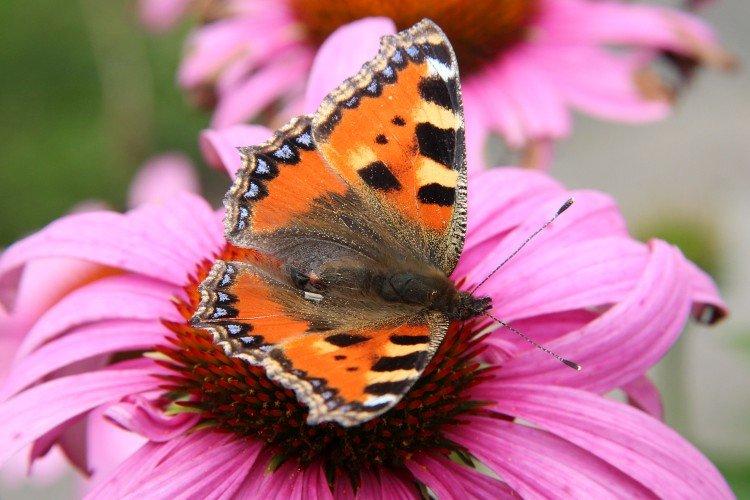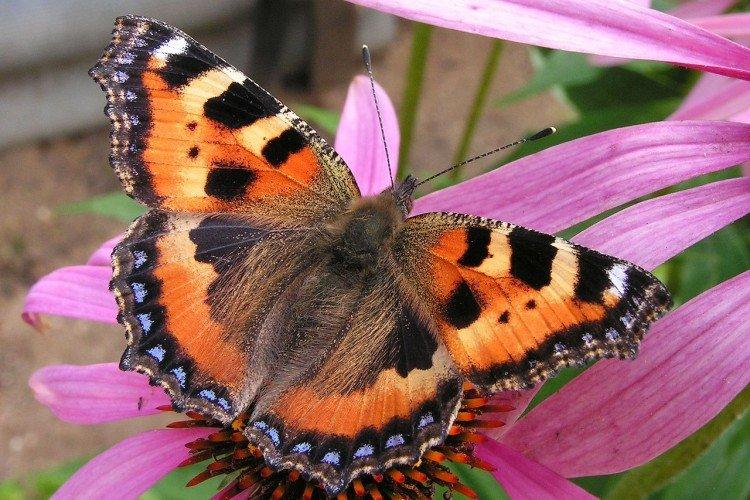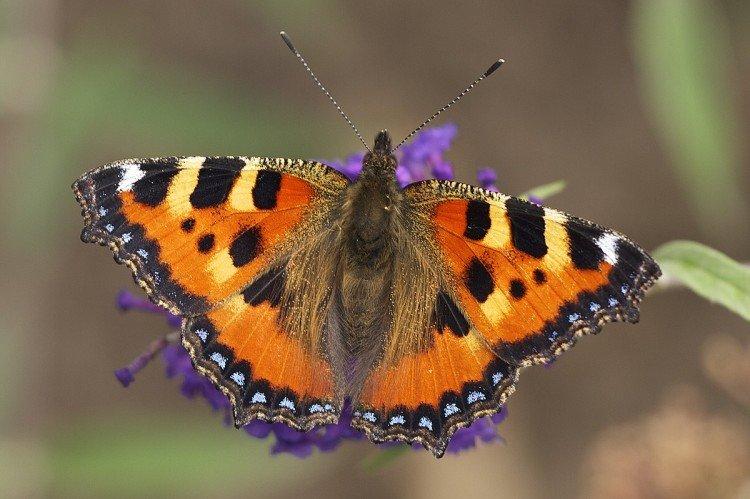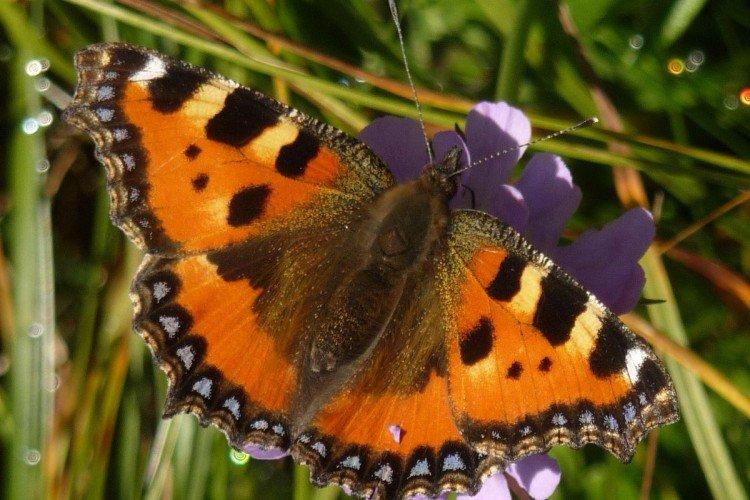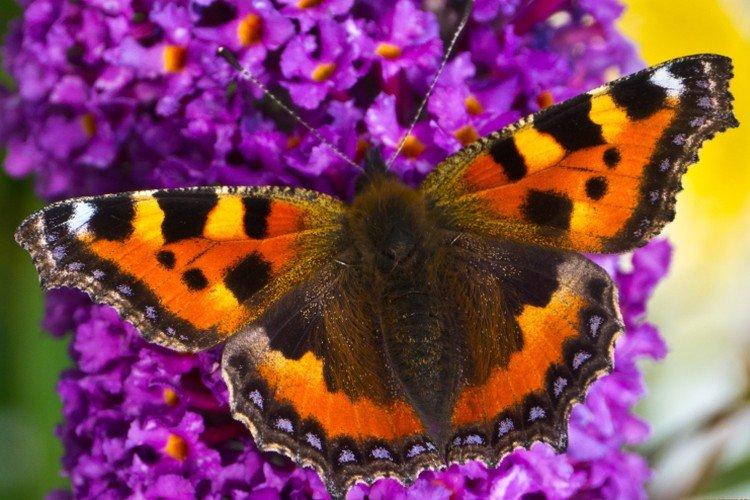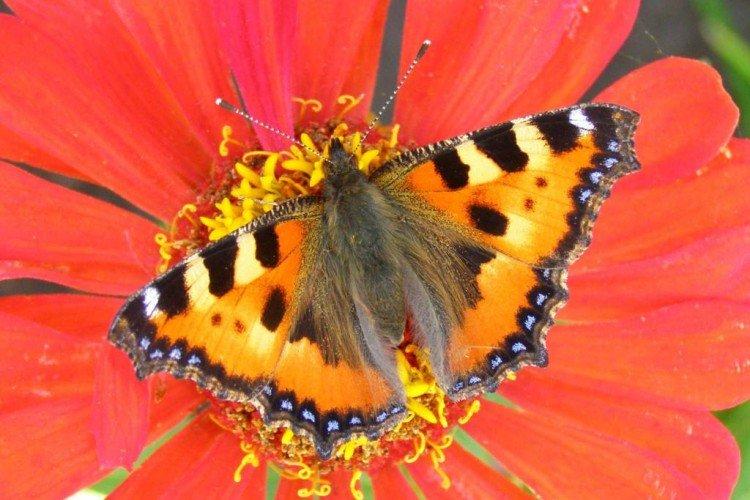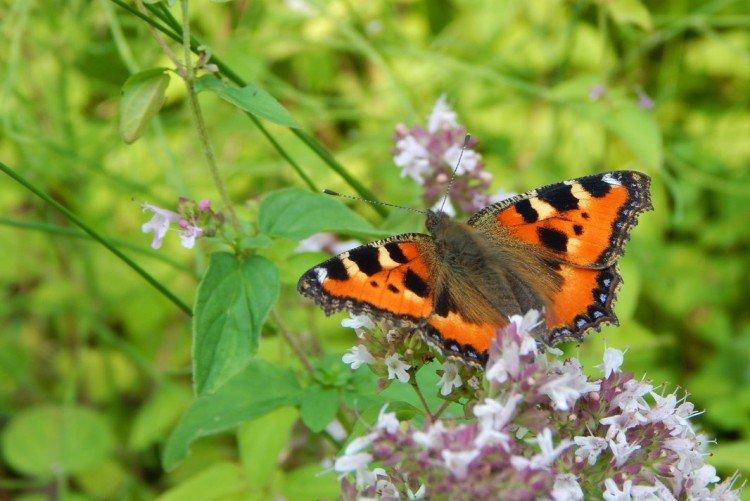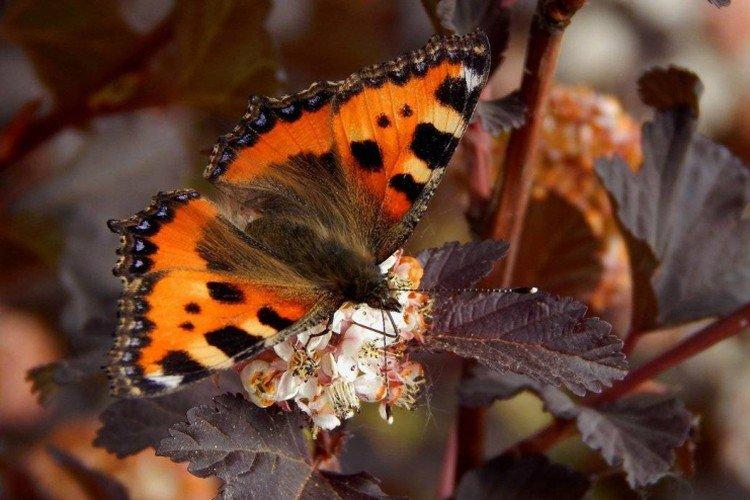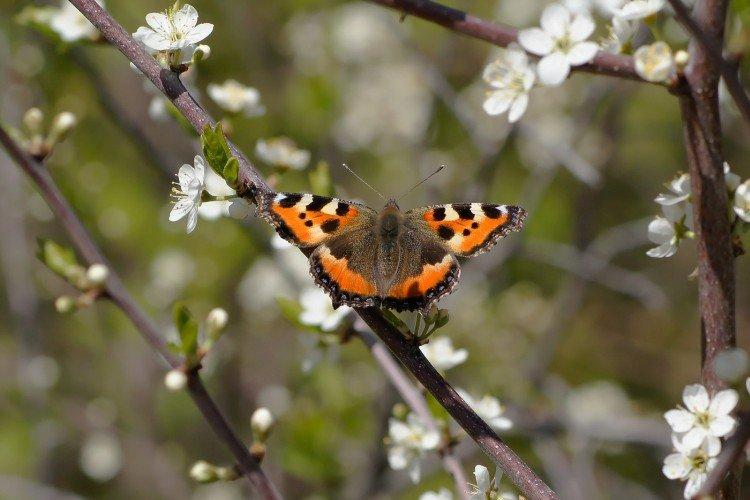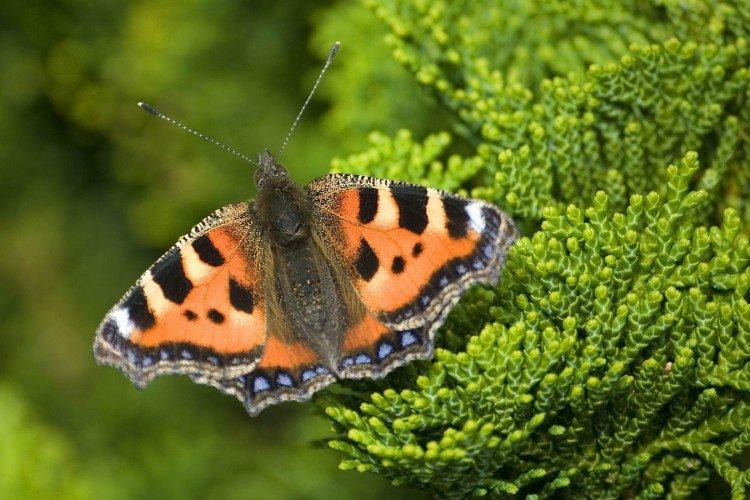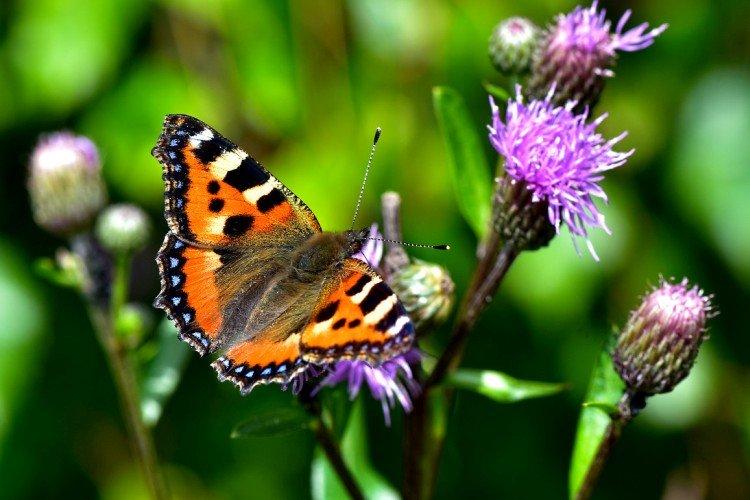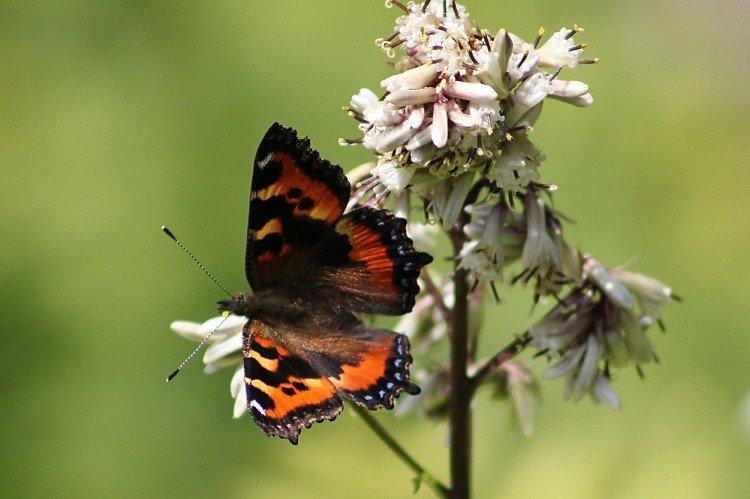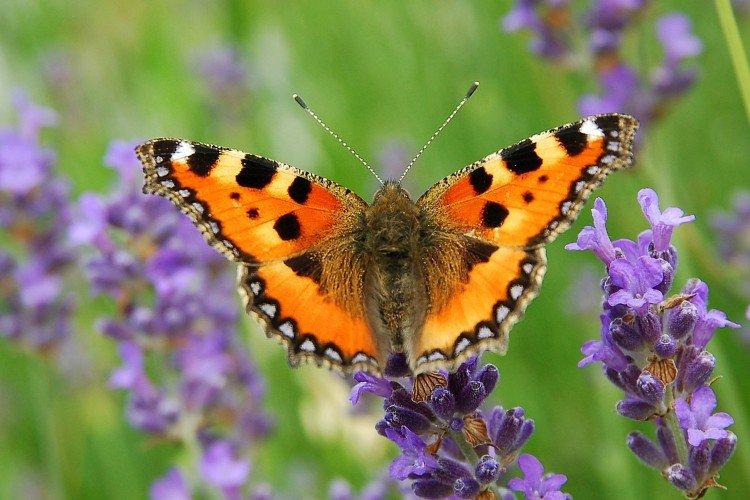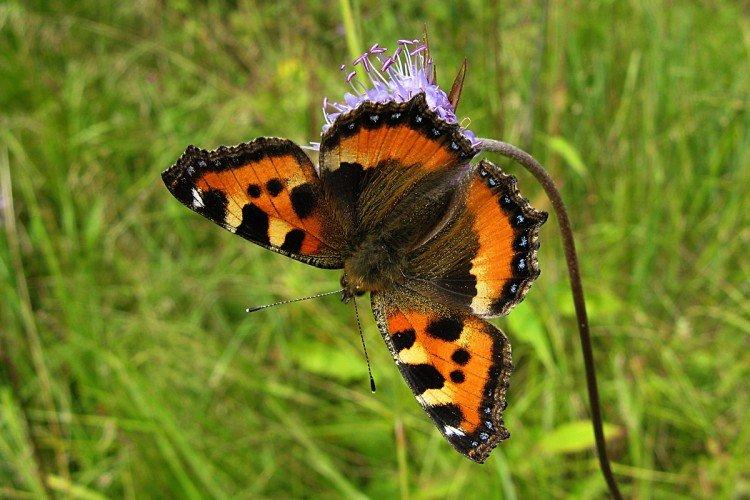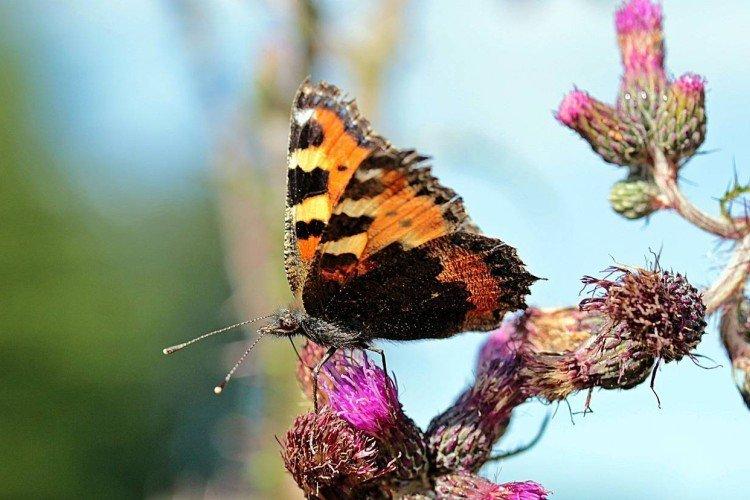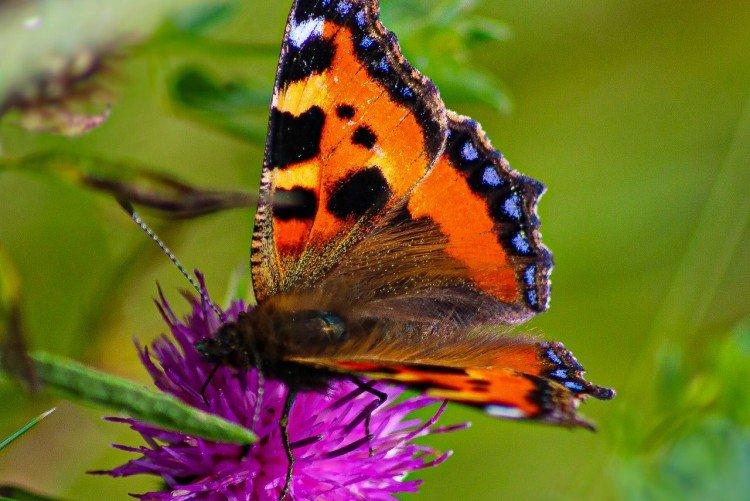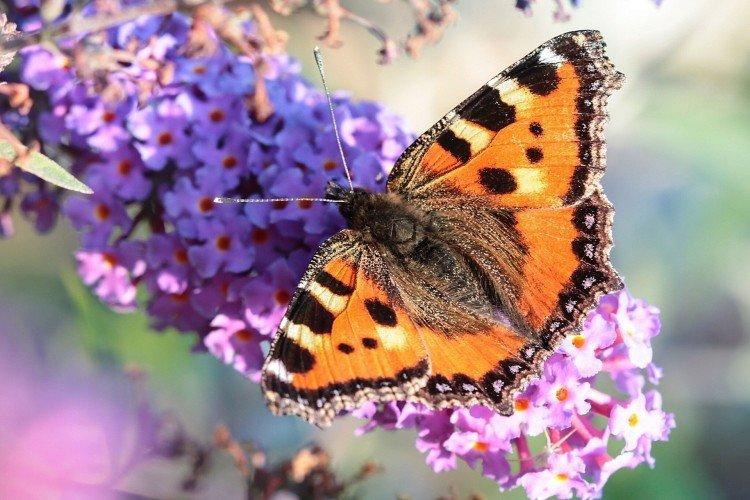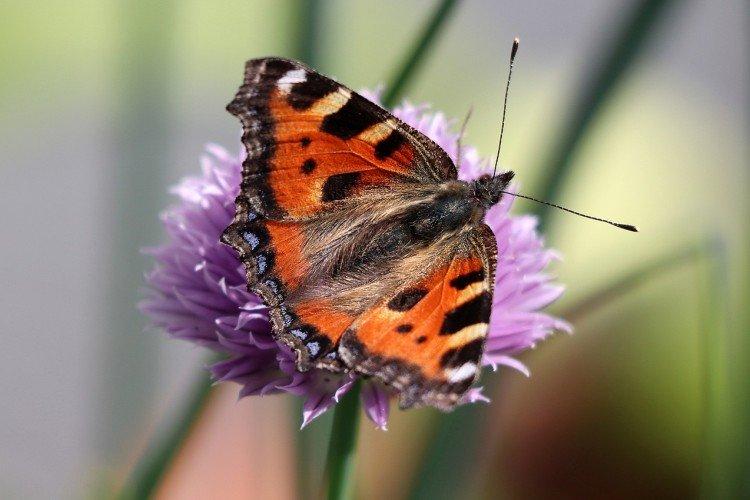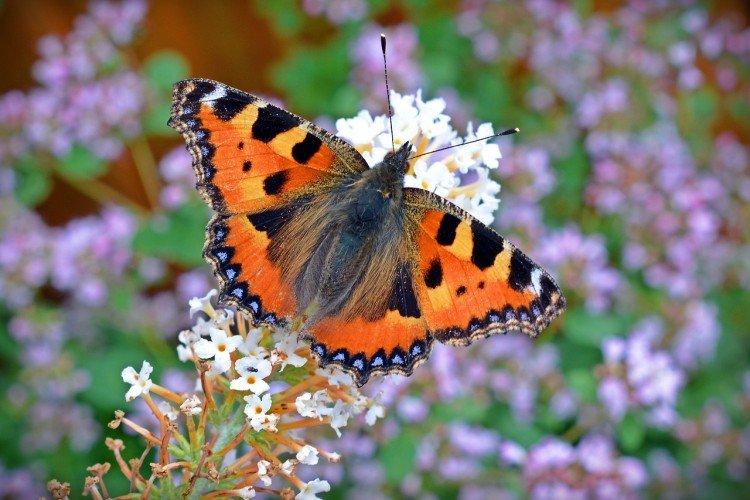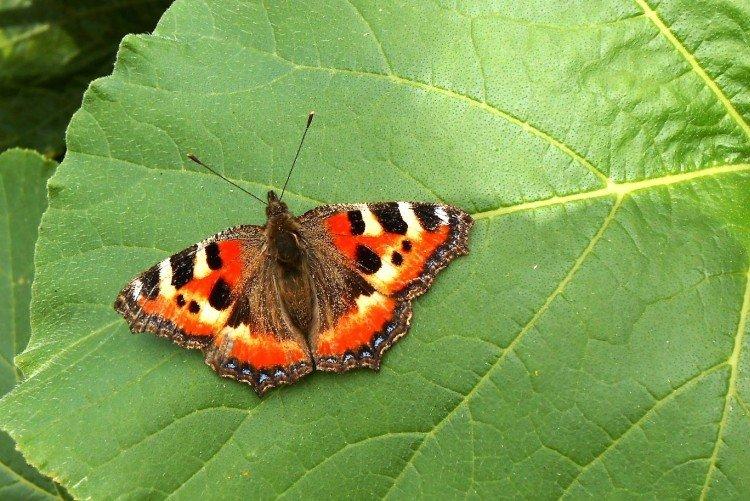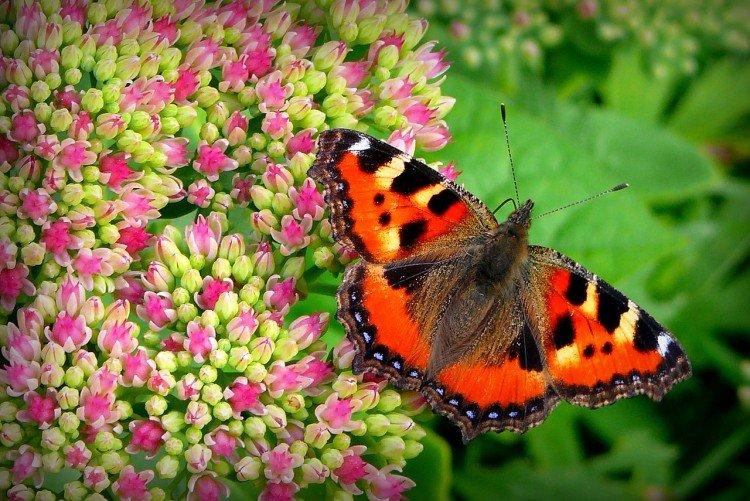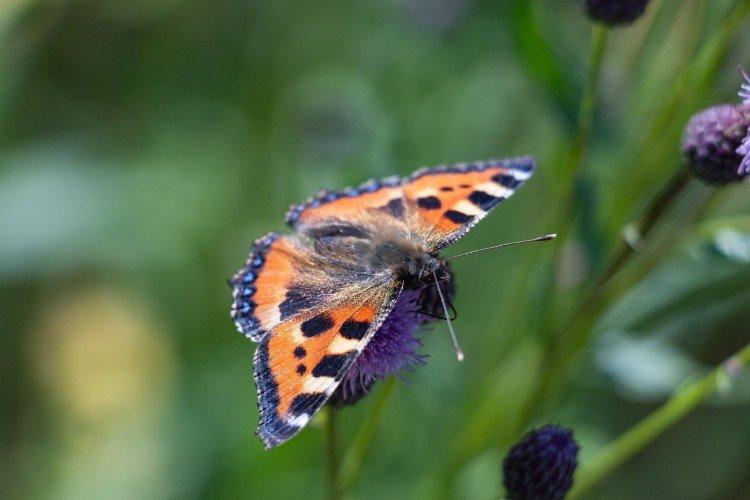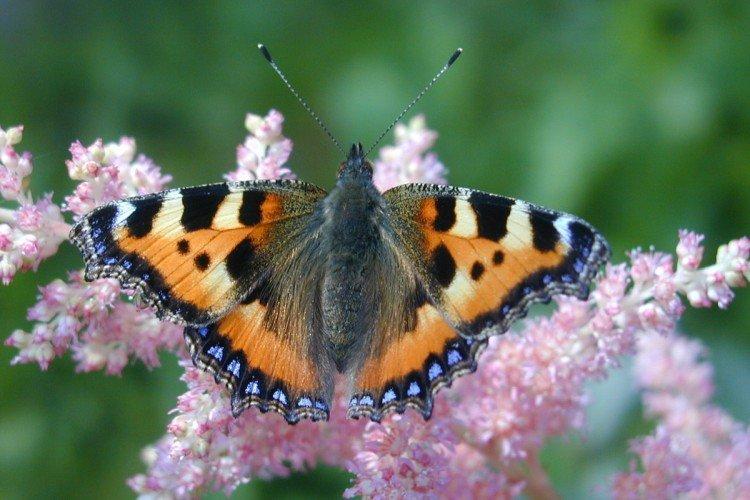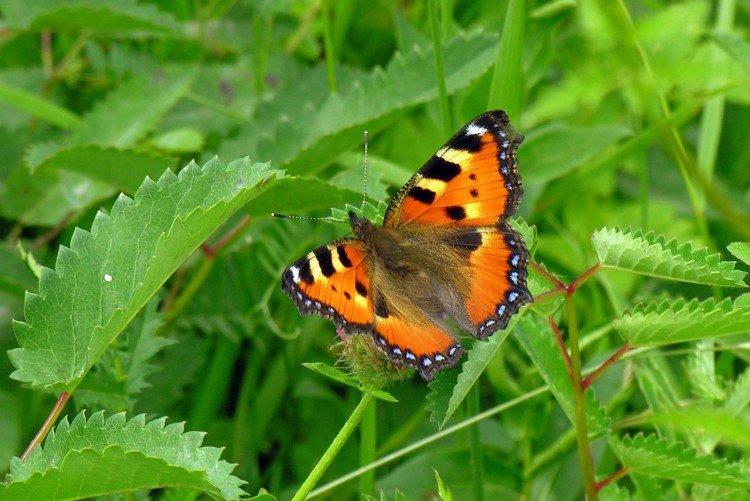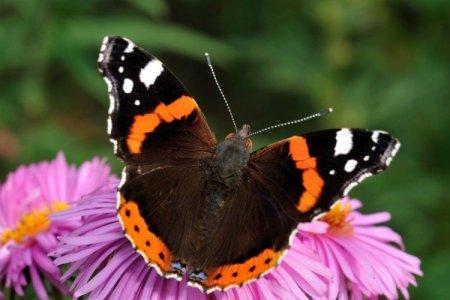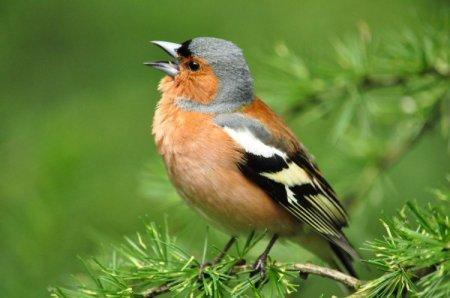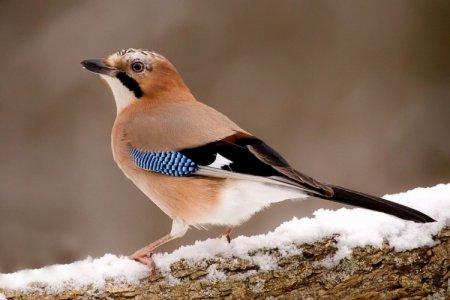
Do you know how many species of those very familiar red and black butterflies actually exist in nature? We would like to introduce you to one more outstanding representative of this group - the urticaria butterfly. You will definitely not confuse who is who anymore!
general description
Urticaria is a diurnal nymphalid butterfly and the admiral's closest relative. Its name is explained very simply - it was the nettle leaves that became the favorite refuge and the basis of the caterpillars' diet. Interestingly, unlike many butterflies, urticaria has a red color, which helps it navigate in search of food.
The Latin name for urticaria is Aglais, in honor of the ancient Greek goddess Aglaya, the goddess of grace. There is also spotted urticaria, but in fact they are different moths. True, outwardly they differ only in one large spot on the front fenders.
Hives live for about 9 months, and this is a lot for moths. Depending on the climatic characteristics of the region, up to two generations are replaced during the calendar year. They fly from early spring days to September.
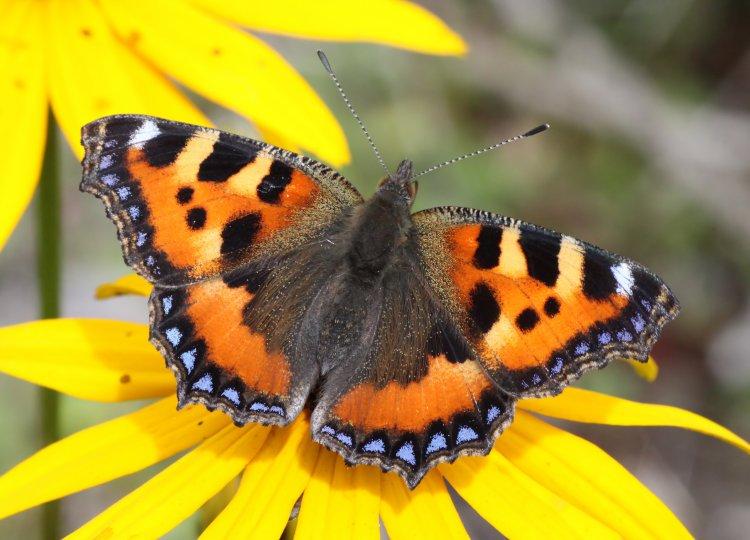
The appearance of butterflies
Hives are butterflies with a wingspan of up to 62 mm. The upper edge of all wings is wavy, with sharp projections. The main shade is brick red, with black, yellow and white spots. A characteristic feature that distinguishes urticaria among its relatives is a blue pattern along the edge.
The inner side of the wings is brown, but not monochromatic. Intricate patterns and color transitions are visible up close and are as unique as human fingerprints. The abdomen is brownish, the antennae are clavate, and the forepaws are small and not needed for movement - only for landing. Urticaria caterpillars are dark or generally black, with yellow stripes on the sides and back.
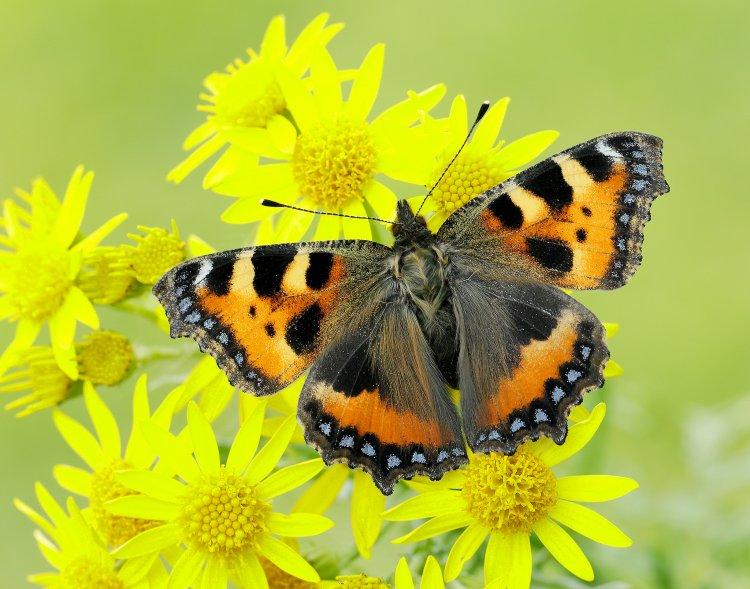
Types of urticaria
There are several subspecies of urticaria, which differ mainly only in the region of habitat. These are Caucasian, Amur, Vietnamese, Trans-Baikal, European butterflies. But the opinions of scientists differ, and they cannot be unambiguously divided into a specific species classification.
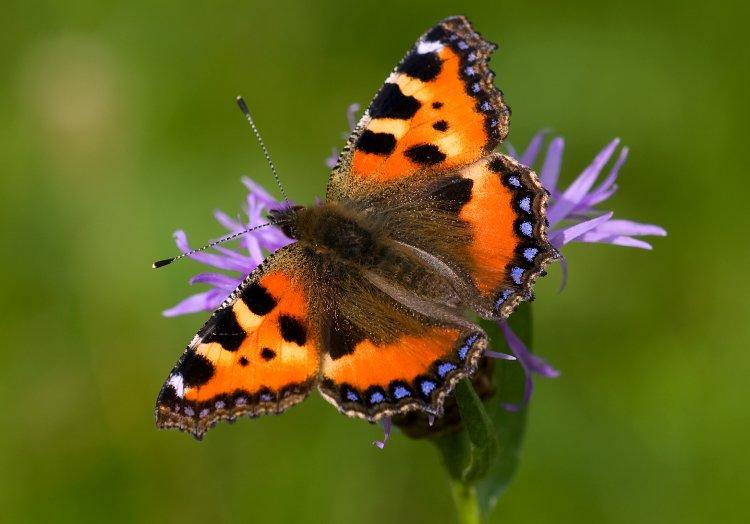
Lifestyle
Urticaria butterflies are truly ubiquitous, and due to this, they easily adapt to different living conditions. Therefore, it is difficult to deduce some general scheme of their behavior, but something can still be noted.
Habitat
Hives are common throughout Europe and Asia, except perhaps in the Far North. They are found in the Caucasus, Kazakhstan, Yakutia and Kamchatka. They were found even in the Alps and in the Himalayas, at an altitude of over 5000 m.
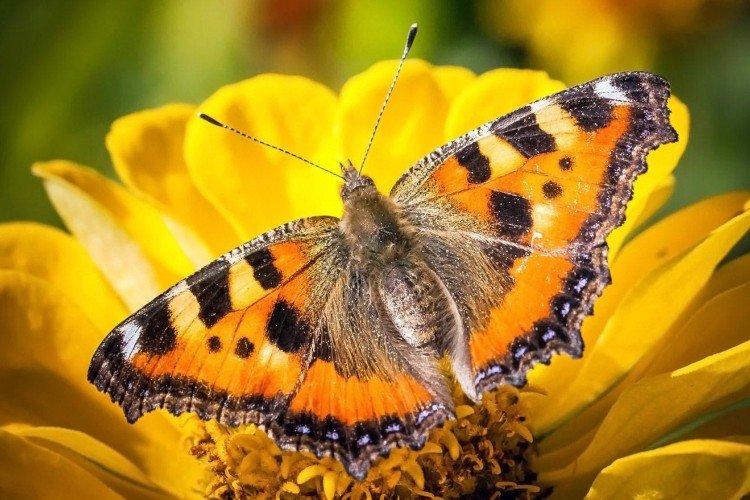
The diet
Urticaria butterflies feed mainly on flower nectar, which is sucked out by a long proboscis. They also like thistle, dandelion, blackberry, and marjoram. They love falling and even rotten fruits. Caterpillars actively feed on various types of nettles, including stinging and dioecious.
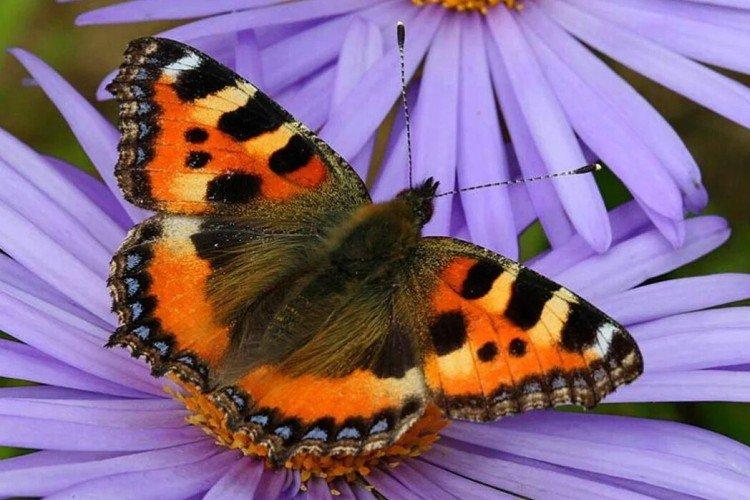
Humidity
Moisture is very important for hives. With the onset of drought, the number of butterflies decreases significantly. In addition, this affects the future generation, because the lack of nutrients in the leaves leads to the fact that caterpillars develop slowly and poorly.
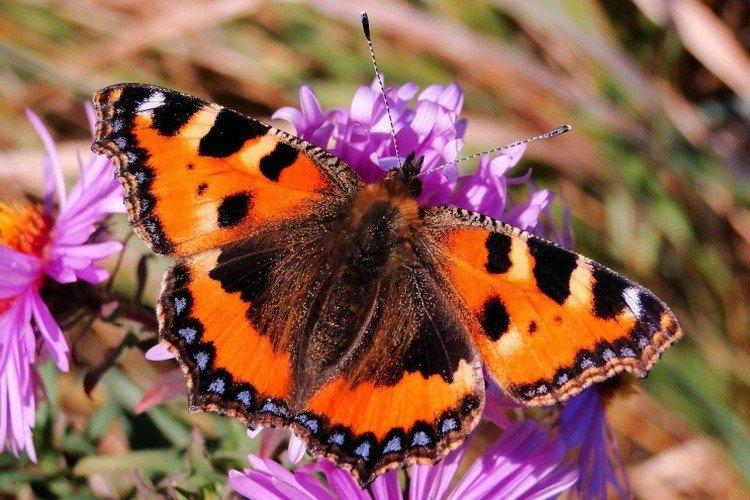
Wintering
Hives do not fly away and hibernate under bark, in hollows, basements, caves and other shelters. They fold their wings and in this form look like a dried leaf. To survive hibernation, butterflies actively feed and accumulate fats in the fall. They are not afraid of frost and can completely freeze at -20, but in the spring they will thaw and wake up.
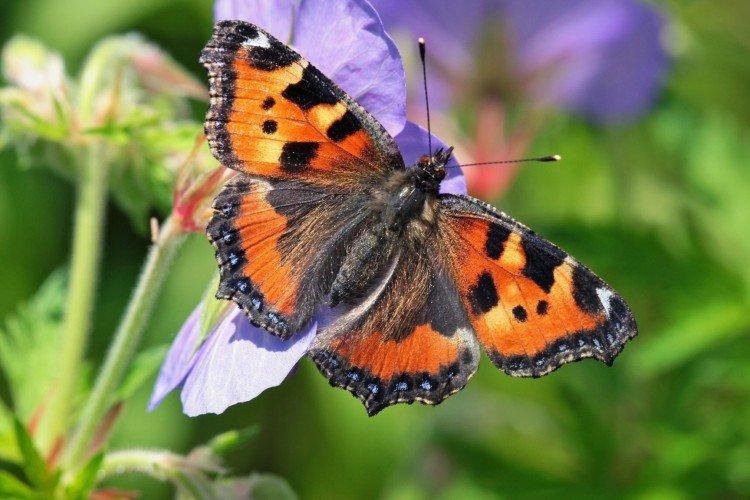
Reproduction of urticaria
Hives are most often found in nettles. The female leaves up to 200 eggs on one leaf, and this takes up to 1.5 hours. Depending on the weather, eggs turn into caterpillars for up to 3 weeks.Then the caterpillars continue to stick together as a whole brood, weave a common web, feed together and move from bush to bush.
The caterpillar molts 4 times, and gradually turns black from green. Only after that they crawl in search of a place for pupation and attach to branches and stems. The pupal stage takes about 2 more weeks, after which the adult butterfly hatches.
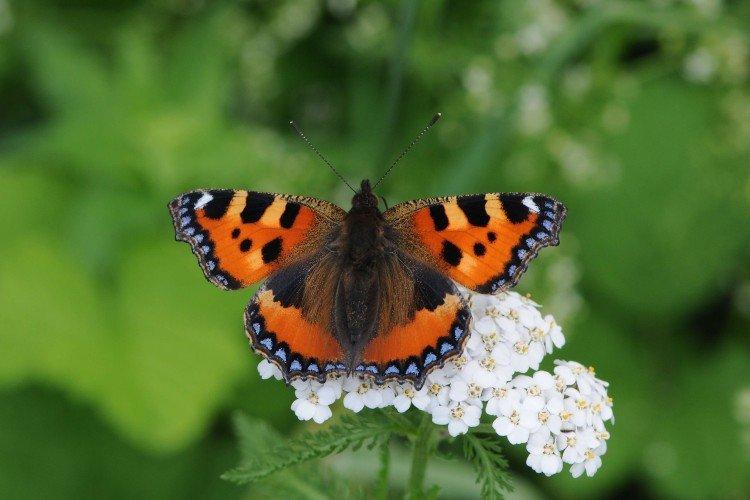
Hives butterflies in captivity
Hives can be kept at home, and moreover, sometimes this is the only way to save caterpillars from frost if they wake up ahead of time at the end of winter. You need warmth, high humidity, fresh air and a proper diet. Birch sap and honey solution will do. You need to feed the butterfly every 24-36 hours, depending on its activity.
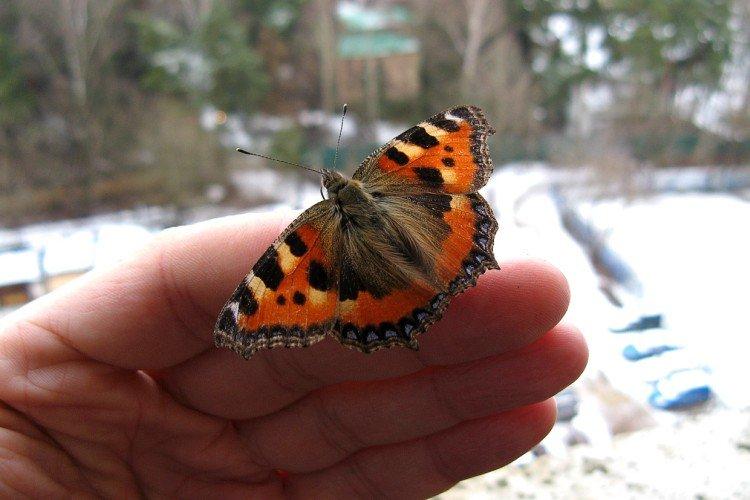
Benefit and harm
The main harm caused by urticaria is the eating of nettle, hop and hemp plantings by caterpillars. But adult butterflies are actively involved in pollination of plants. Due to the absence of damage, they were never targeted for destruction, which favorably affects the population size.
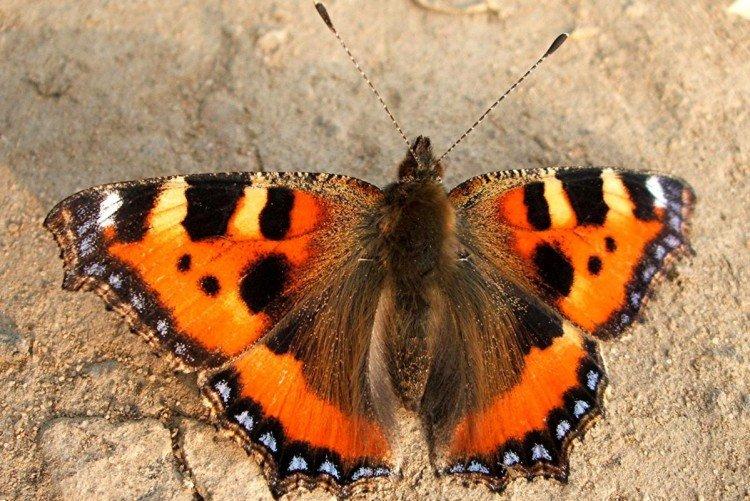
Natural enemies
Urticaria has many dangerous enemies, and it's not just birds. Rodents, small mammals, frogs and lizards feast on butterflies. Caterpillars and pupae often suffer from small parasites.
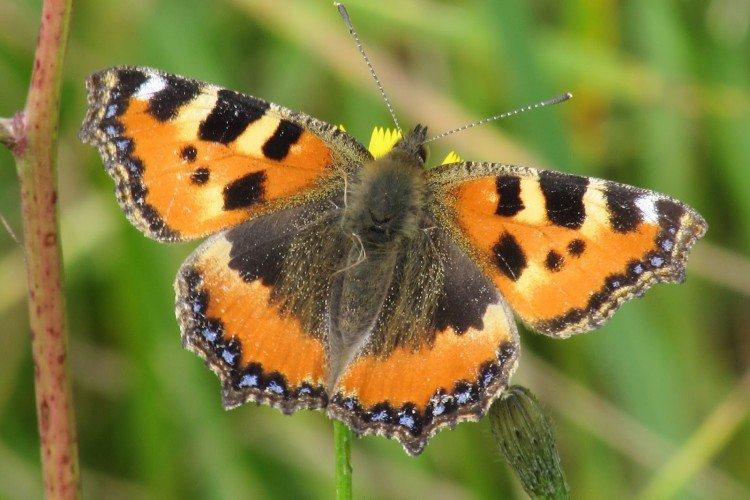
Butterfly urticaria - photo
The patterns on the wings of the urticaria are very simple at first glance. But at the same time, they are bright, original and interesting to look at up close. How many shades can you count?
